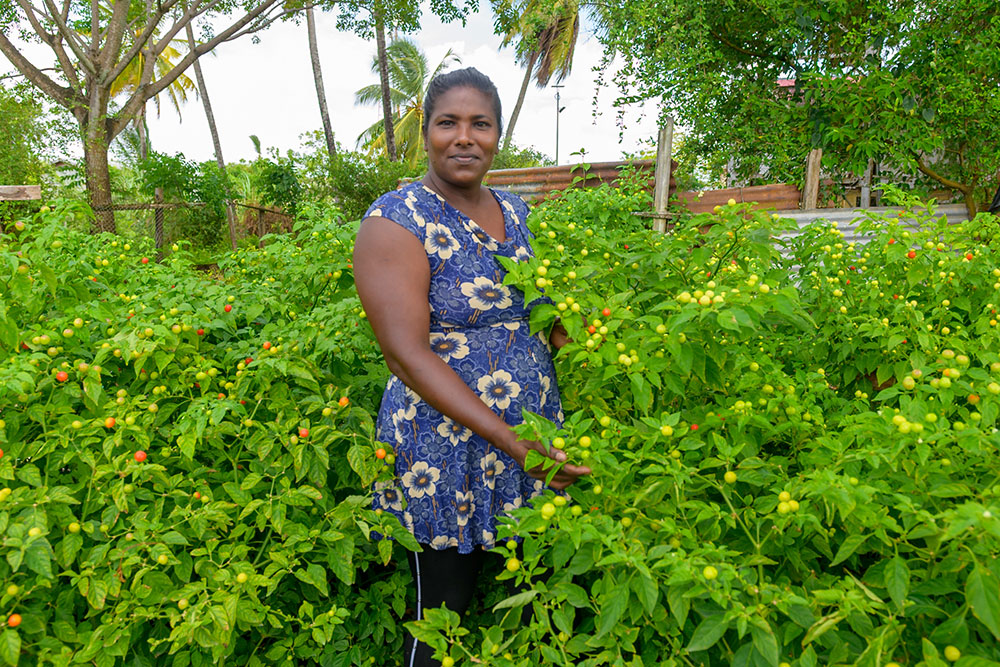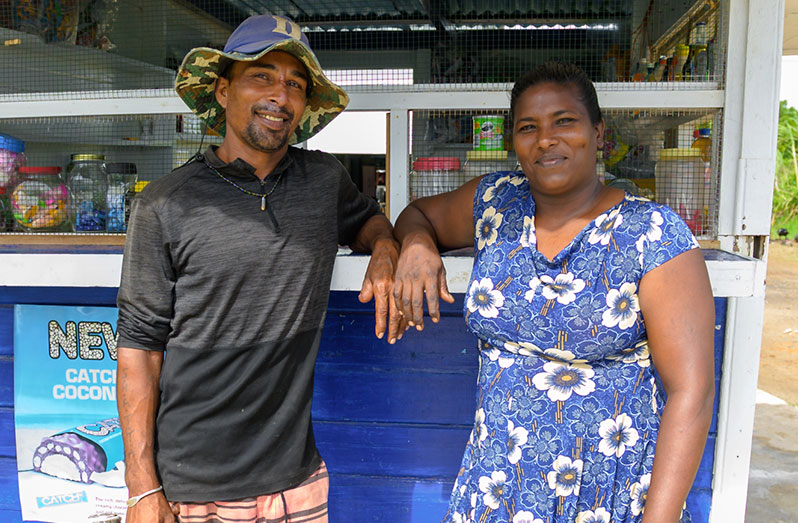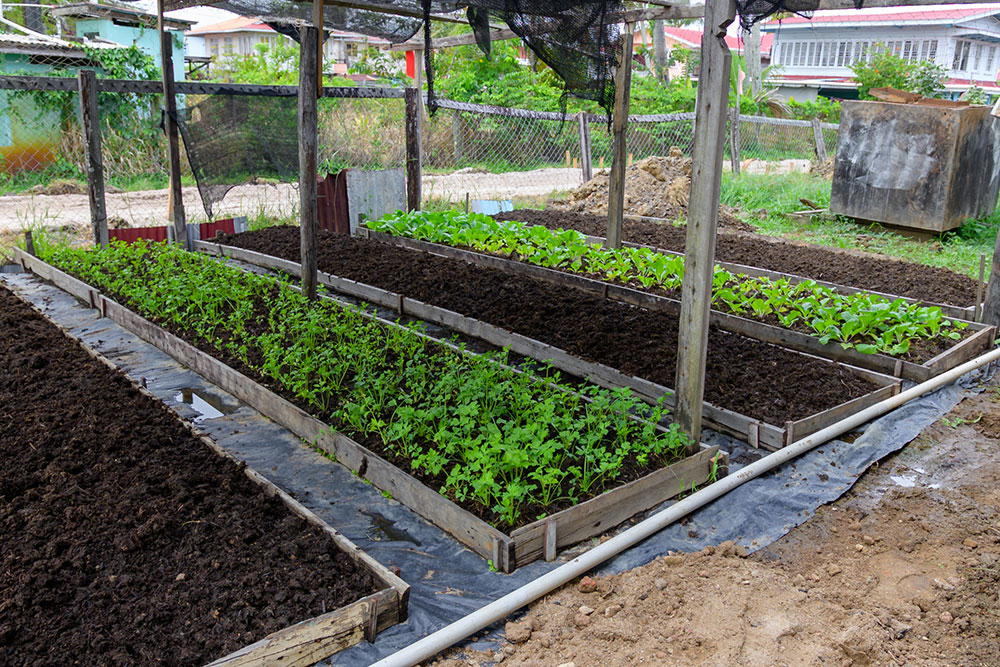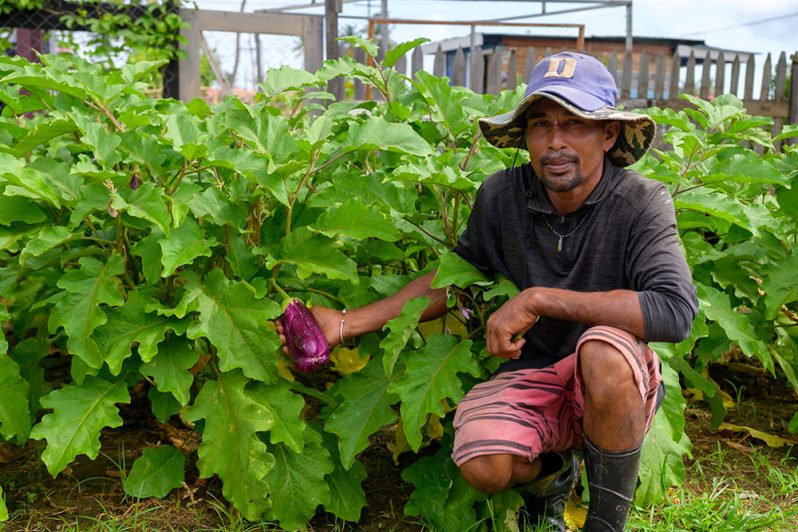AGRICULTURE is a pillar of economic growth and development. In Guyana, one of the largest agricultural hubs in the country is the East Berbice-Corentyne region. This territory is known for its extensive farmlands that play an essential role in driving national food production and food security, particularly by supplying a variety of fresh and organic crops and livestock to local markets.

With farming as the main economic activity in Whim, many farmers native to the village take pride in planting and reaping crops and rearing livestock. By doing this, they can constantly meet ever-growing market demands and sustain households in Guyana, the Caribbean and the international community.

“We plant lots of things, and I would take it to sell at Port Mourant market,” said 44-year-old Rajpattie Sahadeo, who has been farming alongside her husband, Nicky Brijbasi, since 2020.
The couple told this publication that, to date, they have established two large gardens in the community where they get to harvest crops such as boulangers, bora, squash, carailla also called bitter gourd, callaloo, ochro, pak-choi cabbage, tomatoes, sweet peppers and wiri wiri peppers.

Brijbasi detailed that he prepares daily to visit the gardens between 05:00 hours and 05:30 hours to begin maintaining the plants. His agricultural practices for nurturing and reaping healthy crops involve watering the plants and seedlings, constructing new plant beds, sowing seeds in pots with nutrient-rich garden soil, and transplanting seedlings to different plant beds.
Depending on the percentage of crops they reap, Sahadeo either travels to sell the crops at the Port Mourant market or she opts to sell it at the family’s small-scale retail shop that they operate at their home in the village, which complements the sale of groceries and other items.

“We make a living from farming,” said Sahadeo. She hopes they can purchase a plot of land to carry out large-scale farming and crop production in the future.
Apart from being the family’s main source of income, farming is viewed by Brijbasi as a form of relaxation that he has enjoyed doing over the years. He further disclosed that, due to financial constraints, he was forced to leave school at 14 years old and seek jobs to do fishing, carpentry and masonry, and, eventually, he started working on a farm in Crabwood Creek where he was employed for ten years.
Upon his return to Whim in 2020, Brijbasi, together with Sahadeo, began cultivating their thriving gardens.
Meanwhile, Sahadeo stated that she initially decided to venture into farming while assisting her late father. At the time, she lived in Georgetown before she later returned to Whim Village after 24 years. Although she had a wealth of knowledge about farming, she went on to do odd jobs as a single parent to care for her six children.
Sahadeo expressed that it “feels really good” to be a self-sustaining family and to contribute to the local agriculture sector. This feeling serves as an inspiration to continue farming.
Similar to Brijbasi and Sahadeo, 51-year-old Maurice Paradass is also a native of Whim Village who has been farming for over 18 years. Paradass explained that planting became his passion after he built a small kitchen garden years ago in order to earn an income.

Today, he has successfully set up four gardens of considerable sizes around Whim Village, where he harvests crops weekly to sell at the Port Mourant market. Some of the crops that Paradass plants are bora, tomatoes and sweet peppers.
Furthermore, Paradass vehemently believes that there is a need for continuous agricultural assistance because he feels his ‘complaints about the high costs of plant chemicals and greenhouse materials are not being heard’.
Despite the challenges, he explained that his strong-willed trait and determined spirit to be independent have motivated him to work hard at maintaining his gardens and cultivating crops for local markets.

“You got to work for everything you want in this life,” noted Paradass, who related that as a young boy, he saw his father, who sadly died young, often venture out to earn a living as a worker at a hydraulics facility in the community while his mother sold ice, ginger-beer, mauby and other delicious local drink at the Port Mourant market.
Paradass is “simply happy” that he can provide healthy and affordable agricultural crops to people across the country.




.png)









